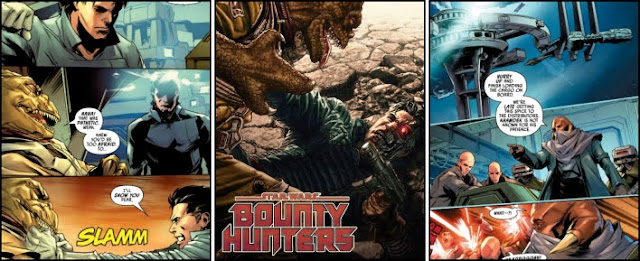 |
| U.S. AGENT No. 2, September 2001 |
The Joe Sinnott Hall of Famer’s sequence set amidst “an Atlantean Outpost manned by a radical faction of the undersea kingdom’s military” is particularly well-penned, with the American author showing just how formidable a fighter U.S. Agent can be despite the anti-hero being heavily encumbered by a deep-sea diving suit. Delightfully though, Ordway even manages to imbue this part of the publication with some surprising vulnerability by having the elderly Farley participate in the mission and almost get killed by a merman’s malicious assault.
This sense of genuine fear for “the midget” is truly palpable, and arguably must have made many within this comic’s audience extremely anxious as to whether the grey-haired, bespectacled scientist was going to survive salvaging Marion Pouncey’s contraband. Indeed, if it were not for a spectacularly impressive appearance by the Sub-Mariner himself at the very last minute, then Walker would undoubtedly have had much more to worry about than his S.T.A.R.S. team relying upon the Avengers to finally catch up with Poundcakes in Connecticut.
Pleasingly, the artwork for “Powerplay” is predominantly as good as the narrative’s writing, with Jerry providing the Atlantean assault with plenty of dynamically-drawn drama. The sense of difficulty for the land-lubbers moving through the watery depths is particularly well emphasised, making it is easy to imagine even someone as super-humanly strong as “one of the four original Grapplers” having to exert themselves that extra bit more so as to propel themselves and their treasure chest full of gold, silver, precious gems and pearls across the sea-bed by foot.
 |
| Writer/Penciler: Jerry Ordway, Inker: Karl Kesel, and Letterer: John Workman |




















